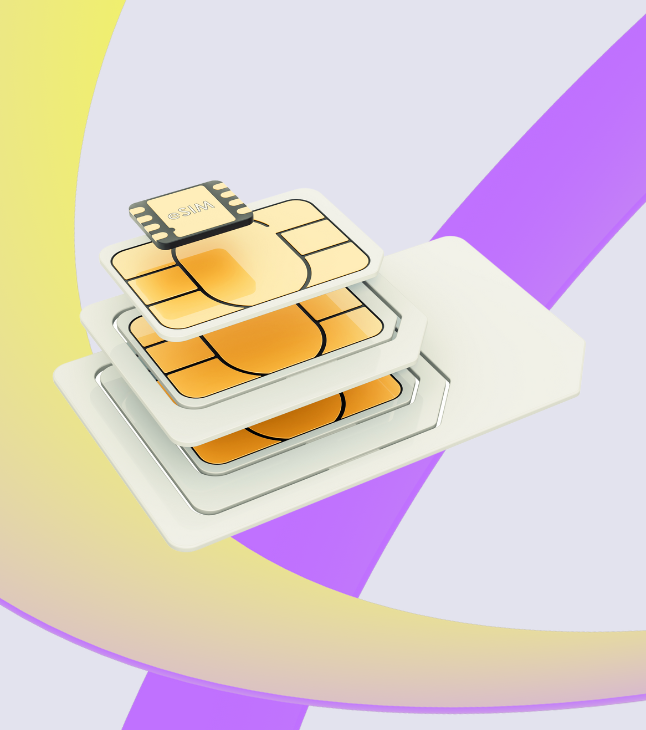We are at a tipping point of technological breakthroughs. Among them, the Internet of Things (IoT) is a growing concept of connecting physical objects, appliances, or vehicles to the internet. The industry of IoT connectivity has grown remarkably from mere data exchange and control to sophisticated solutions. This blog covers some of its booming trends like IoT monetization, IoT security, and ideas of what is coming next in the world of IoT – in other words: the new trends in IoT.
1. The continuous growth of IoT devices in the world
Current trends of IoT point to the bright future of IoT solutions. Notably, in 2022, the number of IoT or connected devices has grown to 14.4 billion at an impressive 18% transformation rate. That’s not all of it; the continued growth in connected devices and connectivity solutions characterizes IoT deployments across industries.
Industries can adapt better communication, exchange data, and enable automation through various cellular or non-cellular IoT connectivities. Industries such as transport, manufacturing, agritech (Agricultural technology), security, healthcare, and retail can all benefit drastically by adding IoT to their arsenal.
The COVID-19 pandemic significantly impacted the healthcare industry, and the use of the Internet of Things (IoT) has been instrumental in helping healthcare professionals respond to the crisis. The developments here were definitely pushed by the world situation in 2020… but thanks to that, it is not stopping now.
IoT has enabled remote patient monitoring, allowing healthcare workers to monitor patients’ vital signs without entering their rooms. With IoT adaptations in place, people were able to track healthcare personnel, equipment, and proper hand hygiene in medical facilities. Additionally, IoT has helped the remote monitoring of individuals in quarantine areas, which has reduced the need for personal protective equipment (PPE). Finally, IoT has enabled the tracking of medical supplies, including PPE and ventilators, which has helped manage the medical supply chain. All of these advances have enabled healthcare professionals to respond better to the COVID-19 pandemic and are set to shape the healthcare industry for years to come, and 2023 won’t be different.
2. IoT Monetization and IoT Subscriptions
IoT monetization is the concept of making IoT into a revenue-generating asset. Depending on what your IoT solution is about, there are various ways to monetize them. The most prominent methods include subscription-based usage, selling IoT data, or offering IoT devices with added connectivity – and charging the users monthly based on the data packages they select. You not only make a profit when selling the smart device to the end-user, but you are also enabling cyclical income for data used by that device.
Any IoT consumer device company can easily monetize the concept with an offering of connected devices. However, even though it is a traditional approach, there are significant difficulties in cracking and penetrating the market. That’s where the novel approach of IoT subscription comes into the picture.
Knowing that all, you can now understand why companies like Freeeway AG developed SaaS IoT Monetization Hub. In other words also known as IoT Subscription Billing Software. It is a type of software that enables companies to automate and manage the billing process for their IoT services and products. This software allows you to set up different pricing plans and bill your customers based on usage, time, or other decided by you, criteria. It also allows companies to automate the billing process, eliminating the need for manual invoicing and reducing the risk of errors. If you want to enable IoT Monetization of your products and services, contact us for a free demo of our new product.
If you are interested in learning more about this IoT trend, check out our article Why IoT Monetization is the Next Big Thing for Businesses.
3. Smart Consumer IoT Devices…everywhere
Consumer IoT devices are in ever-growing demand with new developments and innovations. To give an idea, the consumer IoT devices with cellular connectivity market is expected to amount to $34.27 billion by 2025. Versatility, a broad audience, and easy IoT SIM connectivity for consumer IoT devices create endless possibilities.
Some examples of consumer IoT devices include smart home voice assistants, smart thermostats, home security suites, pet trackers, smart navigation systems, and wearable devices. The growing consumer awareness and the need to make life more efficient and boring things more automated – are welcoming these devices into their modern households. In addition to smartwatches with ECG and Sp02 sensors, wearable skin patches are also becoming more popular. The smart Neuralink device from Elon Musk, which will read neurological signals, could be on the market as early as 2023. This is where people start to speculate if the Internet of Things won’t change into the Internet of Humans. Twenty years ago, many wouldn’t even think about connected/smart fridges, AI assistants on our phones, like Siri or Alexa, smart pet trackers, and scooters in our daily lives. Just imagine where IoT Technologies will be added in the next 5 years.
4. IoT Security on the highest level
The latest trends in the IoT world demand aggressive reliance on security measures. Regardless of industry or applications, IoT security is among the significant concerns. Some of the key trends in IoT security include:
- Device security: As more and more devices are connected to the internet, the need for secure device management and provisioning will become increasingly important. This includes ensuring that devices are properly configured, updated, and protected from hacking and malware. Also, it provides a unique and robust authentication key for IoT devices.
- Cloud security: As more data is collected and stored in the cloud, securing this data will become increasingly important. This includes protecting data from unauthorized access and ensuring that data is properly encrypted and backed up.
- Artificial Intelligence and Machine Learning: AI and ML are increasingly used to detect and prevent cyber-attacks, especially in IoT devices that are vulnerable to attacks. The developments in both AI and ML are significant for safe usage.
- Edge security: There will be a growing need for edge computing to process data at the source. Data can be analyzed locally instead of being sent back to centralized cloud servers. With the growth of edge computing, we may see an increase in security measures at the edge of the network, such as gateways and edge nodes, to protect against external threats.
- Blockchain for IoT security: Blockchain technology could potentially be used to secure IoT devices and networks by providing tamper-proof device interactions and secure communication records.
- Automated security: Automated security solutions that detect and respond to threats in real-time will become increasingly important.
- Security by design: Security will have to be considered one of the essential points from the beginning of the design and manufacturing process. This will help to reduce the number of vulnerabilities in IoT devices and networks.
It is clear that IoT security is a complex and evolving field that requires ongoing attention and investment to ensure the security and privacy of connected devices and the data they generate. Increasing the number of smart devices = increases the importance of secure use.
The Internet of Things (IoT) trends & your connected business
In conclusion, IoT trends demonstrate positive and aggressive growth for connected devices and solutions. At Freeeway, we can enable you to monetize your IoT subscriptions with our IoT Monetization Hub and ensure that you have seamless cellular connectivity that’s flexible, global, secure, and scalable. Contact us today to discuss and evaluate how we can help your business.
Your form entry has been saved and a unique link has been created which you can access to resume this form.
Enter your email address to receive the link via email. Alternatively, you can copy and save the link below.
Please note, this link should not be shared and will expire in 30 days, afterwards your form entry will be deleted.




